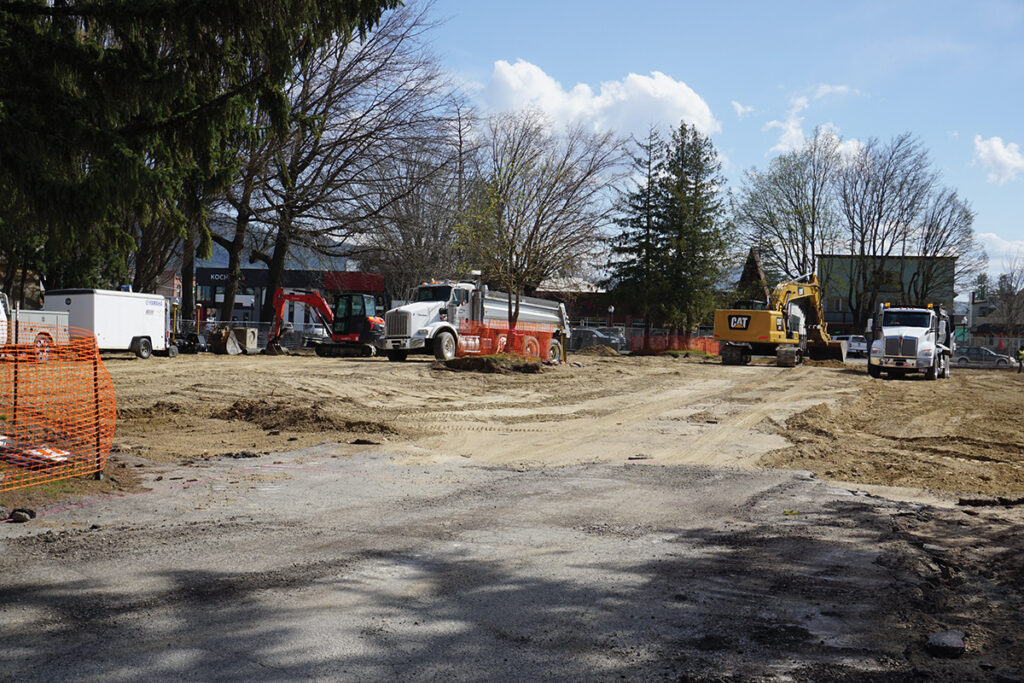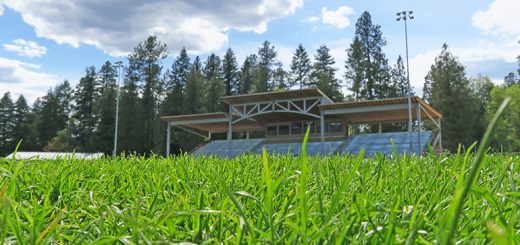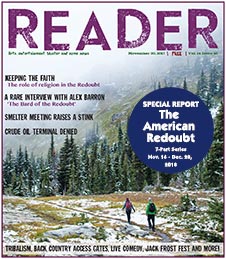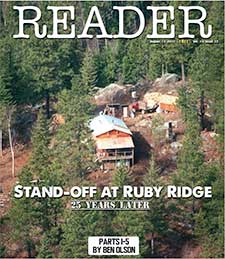Sandpoint P&Z reviews draft parking management plan
By Zach Hagadon
Reader Staff
Proposed changes to parking management in downtown Sandpoint again went before members of the Planning and Zoning Commission at their April 15 meeting, where Community Planning and Development Director Jason Welker presented an updated draft plan, shared details from a recently conducted parking satisfaction survey and asked commission members for feedback.
Welker said tweaks to the plan came after “extensive community engagement,” including the survey, which drew more than 1,800 responses — 54% of them from city residents. According to the results, 72% of survey takers were very satisfied, satisfied or neutral regarding the availability of parking downtown, while 28% were dissatisfied.
“Sandpoint’s perceived street parking challenges are the result of inefficient utilization, not supply of the spaces available,” Welker said, citing vacancy rates of 40-50% he observed during peak hours — even as 121 parking spaces have been temporarily eliminated while work is underway on reconstructing the downtown parking lot between Oak and Church streets.
However, he added, First Avenue, Cedar and Alder streets, and Second Avenue are all beyond their “effective capacity,” defined as a block containing one empty parking space per side.
“Where people desire to park is overutilized,” Welker said.
Following that, he said one of the chief goals of the parking management plan is to encourage motorists — particularly downtown workers — to park farther from the downtown core in order to fill in the unused spaces.
“Street parking is inefficiently used at present,” Welker said.
Details of the plan include instituting a paid parking system at five city-owned parking lots and along the waterfront, with passes available for Sandpoint taxpayers and non-city residents, downtown businesses and downtown residents, and marina slip holders. In addition, hourly parking fees would be assessed on all non-passholders and boat launch fees and annual passes for boat launching would be put in place at public facilities.
Under the proposal, those passes and fees would be applied to parking at locations including City Beach, Sand Creek, Dock Street (the Windbag Marina), Pend d’Oreille Bay Trail and the downtown parking lot.
City resident passholders would get up to six hours of parking, while non-city residents would have up to three hours. The plan also merges the downtown business and downtown resident passes with a $40 per month charge.
In addition, the latest draft of the plan proposes changing the time limits on some downtown curbside parking spaces — specifically, turning all 186 of Sandpoint’s four-hour spaces into all-day parking, “with the goal being to provide downtown business employees with more options for leaving their vehicles parked while they work their full-day shifts,” according to the staff report.
Meanwhile, Welker presented a concept to introduce new off-street parking requirements and parking in-lieu fees for downtown residential development. That issue came to the fore over the previous week related to the proposed Farmin Flats project, which would include 48 single-bedroom and studio apartments, as well as commercial space, on Church Street downtown. However, due to a 2009 code change eliminating parking requirements for downtown development, the project would not be required to provide any parking spaces for residents or commercial uses.
Dozens of residents commented on the proposal, with the overwhelming majority concerned that an influx of vehicles connected with the development would stress parking availability for surrounding businesses.
“The proposal includes restoring parking requirements for residential development only within this zone, with the number of spaces required tied to total square footage of residential development to incentivize more compact, affordable housing developments in the downtown area,” the staff report stated.
In addition, parking in-lieu fees are intended to reflect “the true cost of providing structured off-street parking” and capture revenue in order to maintain and expand access to public parking.
Welker described the in-lieu fee for residential development parking as a significant “nest egg” for future parking investments — which include an eventual downtown parking garage, which is estimated to cost at least $10 million — and may contribute to lowering rents because developers wouldn’t have to dedicate land for parking stalls. He characterized the choice as between “housing for cars or housing for people.”
P&Z Chair Mose Dunkel supported the in-lieu fee proposal in order to “maximize use” while giving downtown developers some leeway.
“I’m in favor of looking at making things easier for development because that’s what commercial development is for — it’s for retail. Business,” he said.
Welker also asked commission members for their thoughts on reintroducing parking meters to First Avenue, Cedar Street and “other streets currently beyond their effective capacity.”
Sandpoint had downtown meters from the 1920s until the mid-1980s.
The “pros” in Welker’s presentation were that metered parking stops the “two-hour shuffle” of downtown employees having to leave their place of work to move their cars in order to avoid a ticket; encourages more turnover of downtown stalls, creating more spaces for shoppers and customers and benefiting downtown merchants; and generating more revenue for the city.
“Cons” include community pushback and the cost of implementation and enforcement.
Welker said metered parking would be a “modern, efficient system,” with one kiosk costing about $3,000 and serving several spaces, or even an entire block.
Commissioners were generally receptive to the metered parking idea, but some worried that general community opposition would trigger a negative response to the overall plan.
“This debate has been around forever, and the problem is that people don’t want to walk to the store,” Dunkel said.
According to the parking survey, which ran through March, 56.5% of Sandpoint residents said they drive and park on the street, while 20.6% drive downtown and park in a public lot. A majority of city residents — 59% — stated they would not be willing to buy a parking pass, which was echoed by 70% of non-city residents.
In response to the question of how city residents thought parking lot maintenance and improvement should be funded, 35.7% said user fees and 35.4% opted for state or federal grants.
The P&Z Commission did not take action on the plan, but the timeline presented by Welker shows another presentation of the draft to the City Council on Wednesday, May 7, followed by a public hearing at P&Z on Tuesday, May 20 and consideration of a final plan at the Wednesday, May 21 meeting of the City Council.
Another public hearing is anticipated at the council on ordinance changes Wednesday, June 18, with a request for proposals to implement paid parking running from June to August. The selected contractor would then install the necessary technology for paid parking with a window of 2025-2026.
View the full plan, proposed ordinance changes, survey results, 2022 parking study and more at sandpointidaho.gov under “Calendar/Meetings” and by selecting the April 15 P&Z meeting. The relevant documents are included in the agenda packet.











 Coming up this week! Don’t miss Live Music, the Summer Sampler, the Art Party, Monarch Grind, the Sandpoint Renaissance Faire, and more! See the full list of events in the
Coming up this week! Don’t miss Live Music, the Summer Sampler, the Art Party, Monarch Grind, the Sandpoint Renaissance Faire, and more! See the full list of events in the 